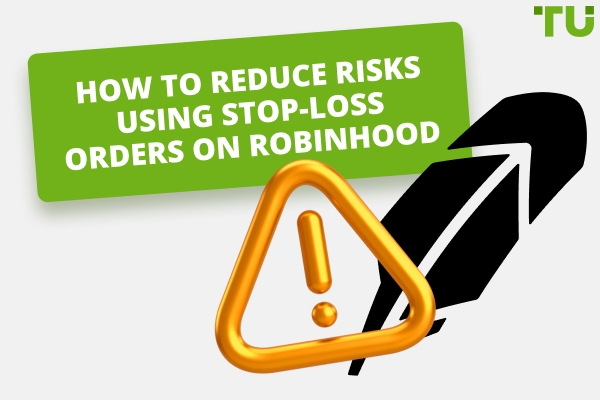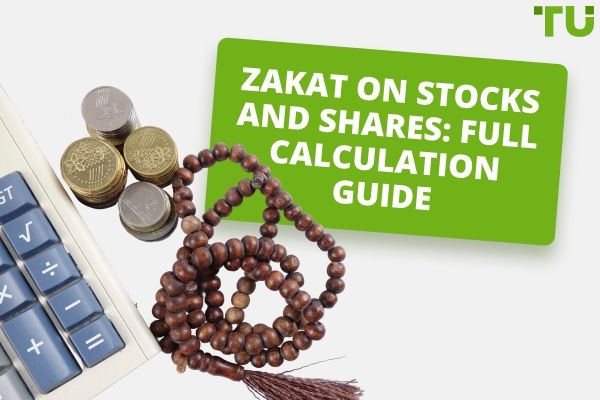
How To Remove Pattern Day Trader Status On Robinhood in 2025
The Pattern Day Trader (PDT) status is a classification by FINRA (Financial Industry Regulatory Authority) that applies to traders who make frequent trades within a short time in a margin account. For traders using Robinhood, being flagged as a PDT can limit their trading freedom and strategies. Understanding how to remove or avoid this status is important for anyone using this broker.
How to remove Pattern Day trader status on Robinhood
PDT status applies to accounts that execute four or more day trades within five business days, provided these trades represent more than 6% of the account's total trading activity. This rule is designed to mitigate the risks associated with high-frequency trading using margin. If your account equity is below $25,000 and you meet these criteria, Robinhood will flag you as a Pattern Day Trader.
If you’ve been flagged as a Pattern Day Trader, here are four ways to resolve the issue:
Increase your account equity to $25,000
The simplest way to remove PDT restrictions is by ensuring your account balance exceeds $25,000. Note that this balance must consist of cash and settled assets, as cryptocurrency holdings are not considered.
Switch to a cash account
Converting your account to a cash account eliminates PDT restrictions. While you won’t have access to margin, you can day trade as long as you use settled funds. Keep in mind that funds from a sale typically take two business days to settle.
Use Robinhood’s one-time PDT removal option
Robinhood offers a one-time courtesy removal of the PDT flag. To request this, contact customer support through the app. However, this option is only available once, so it should be used strategically.
Wait out the 90-day restriction
If none of the above options work, you’ll need to wait out the 90-day restriction period. During this time, you can still trade, but you’ll be limited to non-day trading activities.
Why does PDT status matter?
Once flagged as a PDT, you face restrictions that can limit your ability to trade effectively:
-
90-day trading restriction. You cannot place further day trades unless your account equity reaches $25,000.
-
Limits on margin trading. You may lose access to margin facilities, which can affect your trading strategies.
Considerations for Robinhood traders
-
Stick to cash accounts to avoid PDT rules altogether
As a beginner, it’s important to focus on learning the basics of trading without worrying about complex regulations like PDT rules. By using a cash account, you can avoid the stress of being flagged as a Pattern Day Trader. While you won’t have access to margin, the simplicity of a cash account allows you to practice trading with settled funds only, which encourages responsible financial habits.
-
Limit trading frequency while you’re learning the market
Frequent trading can lead to mistakes, especially when emotions like fear or greed take over. Limiting your trading frequency allows you to focus on making informed decisions. Spend time analyzing market trends, reading educational materials, and testing strategies on a demo account if possible. Aim for quality trades rather than quantity.
-
Use Robinhood’s educational tools and simulated trades
Robinhood offers various resources to help new traders. Take advantage of these tools, like the app’s tutorials and market insights. Simulating trades or using a demo account can also help you understand trading without risking real money.
-
Prioritize risk management
Establish strict rules for yourself, such as setting stop-loss orders to cap potential losses. Avoid using large portions of your portfolio on a single trade, as this increases the risk of significant losses.
-
Focus on building a solid trading plan
Start by outlining clear goals, such as saving for a specific purpose or generating steady returns. A trading plan can help you stay disciplined and avoid impulsive decisions.
-
Maintain the $25,000 minimum balance for greater trading flexibility
Having at least $25,000 in your account eliminates PDT restrictions, allowing you to trade freely. To maintain this balance, ensure you manage your withdrawals and investments carefully. Consider reserving a portion of your portfolio as uninvested cash to cover sudden losses or margin calls.
-
Diversify your strategies to include long-term investments
While day trading can yield quick returns, relying solely on short-term trades can increase risk. Diversifying your portfolio with long-term investments, such as index funds or blue-chip stocks, provides stability and reduces dependency on frequent trades.
-
Explore options and margin trading responsibly
With the flexibility of a high-equity account, you can access tools like options and margin trading to amplify returns. However, use these with caution. Ensure you understand the risks, including potential losses exceeding your initial investment in the case of margin trading.
-
Hedge against market risks
Implement hedging strategies, such as short-selling or buying options, to protect your portfolio during market downturns. These methods can help minimize losses while still allowing for growth opportunities.
Risks and warnings
-
Trading on margin. While margin trading can amplify returns, it also increases losses. Be cautious when using borrowed funds.
-
Account lockdowns. Being flagged as a PDT can severely limit your trading options for three months.
-
Overtrading risks. Frequent trades can lead to emotional decisions and significant financial losses.
The safest option is to use a cash account
To remove or avoid the Pattern Day Trader (PDT) status on Robinhood, 2024, try shifting some of your trading to a cash account, which isn’t affected by the PDT rule. With a cash account, you trade using your available balance without worrying about borrowed funds. This way, you don’t risk having your account restricted, and you can keep trades moving by withdrawing part of your funds in stages to keep cash on hand.
Another helpful tip is to use fractional shares in your cash account. This lets you spread out your investments and take advantage of smaller amounts without getting flagged as a day trader. Combine this with spaced-out trading instead of back-to-back trades, and you can better manage your trading without triggering the PDT rule. This approach helps you stay flexible, rethink your trading, and keep growing even with restrictions in place.
Conclusion
Removing Pattern Day Trader status on Robinhood goes beyond just understanding the rules; it’s about finding smart ways to work within them while keeping your trading flexible. By considering options like using a cash account, trading fractional shares, and spacing out your trades, you can avoid account restrictions and keep your momentum going. More than just a quick fix, this is a chance to look at day trading differently and build habits that lead to steady growth and better trading decisions.
FAQs
Can cryptocurrency trades flag me as a PDT on Robinhood?
No, cryptocurrency trades are not counted under PDT rules.
Is there a penalty for being flagged as a PDT?
Yes, you’ll face a 90-day restriction on day trading unless you raise your equity to $25,000.
What happens if I switch to a cash account?
PDT rules no longer apply, but you’ll need to wait for funds to settle before reusing them.
Can I day trade options without hitting PDT limits?
Options trades count as day trades under PDT rules, so they can trigger restrictions.
Team that worked on the article
Oleg Tkachenko is an economic analyst and risk manager having more than 14 years of experience in working with systemically important banks, investment companies, and analytical platforms. He has been a Traders Union analyst since 2018. His primary specialties are analysis and prediction of price tendencies in the Forex, stock, commodity, and cryptocurrency markets, as well as the development of trading strategies and individual risk management systems. He also analyzes nonstandard investing markets and studies trading psychology.
Also, Oleg became a member of the National Union of Journalists of Ukraine (membership card No. 4575, international certificate UKR4494).
Chinmay Soni is a financial analyst with more than 5 years of experience in working with stocks, Forex, derivatives, and other assets. As a founder of a boutique research firm and an active researcher, he covers various industries and fields, providing insights backed by statistical data. He is also an educator in the field of finance and technology.
As an author for Traders Union, he contributes his deep analytical insights on various topics, taking into account various aspects.
Mirjan Hipolito is a journalist and news editor at Traders Union. She is an expert crypto writer with five years of experience in the financial markets. Her specialties are daily market news, price predictions, and Initial Coin Offerings (ICO).












